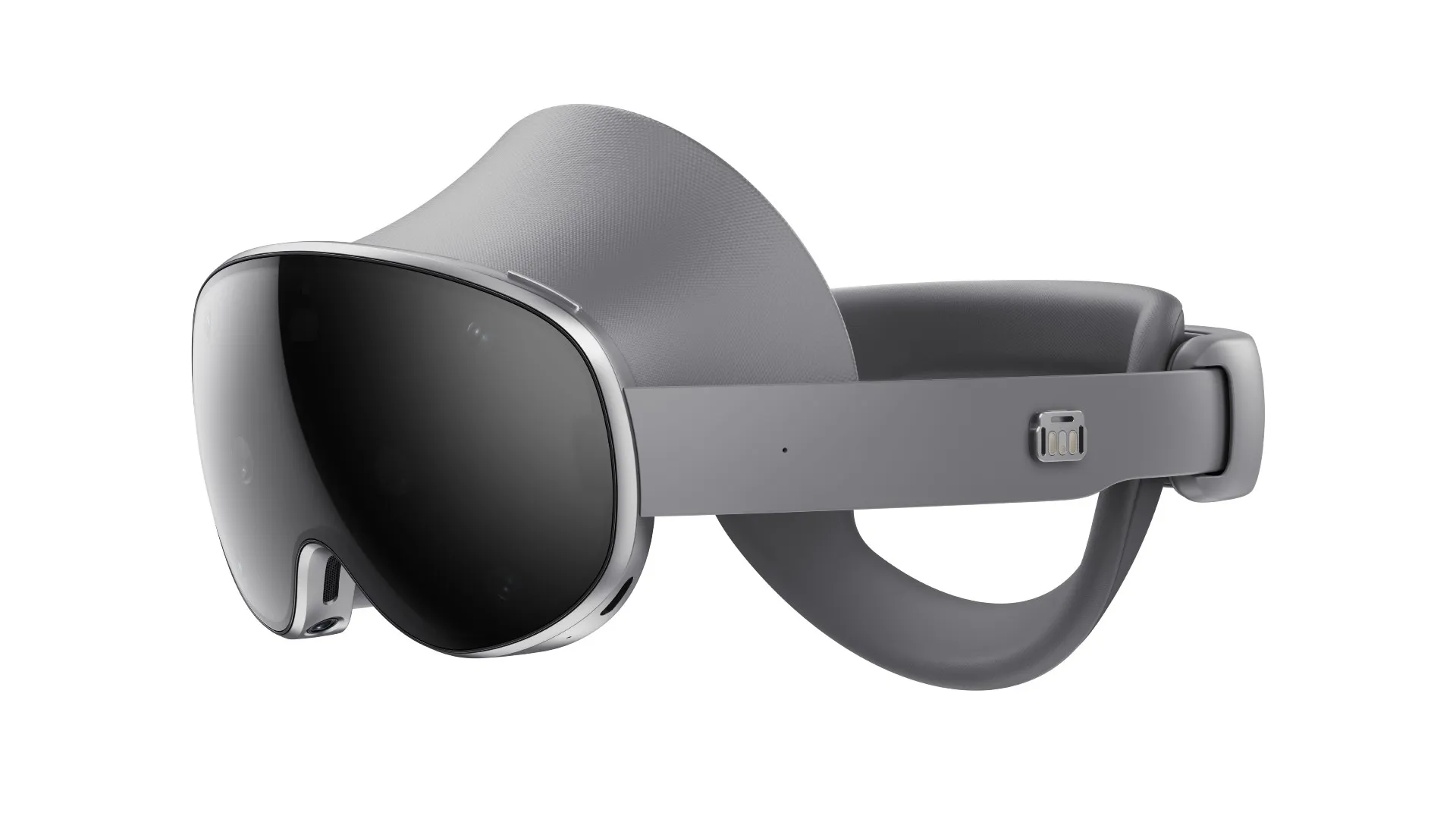Copyright Road to VR

Samsung’s Project Moohan is officially called ‘Galaxy XR’, as the Korean tech giant has today launched its long-awaited competitor to Apple Vision Pro. The News Priced at $1,800 and releasing today in the US, Samsung Galaxy XR is the first headset to support Google’s Android XR operating system, which means it has access to standard Android mobile apps in addition to made-for-XR native apps. Available direct from Samsung and Samsung Experience retail stores, Galaxy XR is coming in a single 256GB version, which includes dual 3,552 x 3,840 Micro-OLED displays clocked at a default 72Hz refresh (max 90Hz), 256GB of storage, 16GB of RAM and Qualcomm Snapdragon XR2+ Gen 2 chipset. See the full spec sheet below. Like Vision Pro, Galaxy XR offloads power consumption to a tethered battery pack, which is rated for around two hours of general use, or up to 2.5 hours of 2D video playback via YouTube. It can also be used while charging, Samsung notes. While Galaxy XR supports both eye and hand tracking, Samsung is also releasing dedicated motion controllers separate from the headset, which are available today from Samsung for $250. Similar to Meta’s Touch Plus controllers, Galaxy XR’s feature a standard layout, including dual joysticks, grips and triggers, face buttons (X, Y, A, B) and menu buttons. As for other accessories, Samsung is also offering an official carrying case, priced at $250, which includes a space for the headset and tethered battery pack. Users will also be able to buy prescription lenses separately, which are sold and delivered by EssilorLuxottica’s EyeBuyDirect.com. Samsung mentioned a few supported apps during its presentation, which include games NFL PRO ERA and Vacation Simulator, Adobe’s video editor Project Pulsar, a short 180-degree film called Asteroid, and the meditation app Calm. Android XR is also bringing to Galaxy XR a number of XR-optimized versions of standard apps, including Google Maps, YouTube, Circle to Search, and Google Photos. One of the biggest features is Android XR included support for Google Gemini, which can be used in a number of ways, like navigating to 3D places in Google Maps, asking for personalized suggestions, browsing and giving context to YouTube videos, and asking questions about objects in your physical environment. Like Vision Pro, Gemini can also “auto-spatialize” videos and photos into 3D by inferring depth in inherently 2D captures. Samsung notes that customers who purchase Galaxy XR before the end of 2025 will also get “The Explorer Pack’, which includes 12 months of access to Google AI Pro, YouTube Premium, Google Play Pass, and a pack of “specialized XR content,” something the company says is worth more than $1,000. Samsung Galaxy XR Specs Category Details Memory & Storage 16GB RAM 256GB Storage Display 3,552 x 3,840, 29 million pixels Micro-OLED 6.3-micron pixel pitch 96% DCI-P3 Refresh rates: 60Hz, 72Hz (Default), 90Hz Field of View 109 degrees horizontal and 100 degrees vertical Chip Snapdragon XR2+ Gen 2 Platform Sensors High-resolution Pass-through cameras (2) World-facing tracking cameras (6) Eye-tracking Cameras (4) Inertial Measurement Units (5) Depth sensor (1) Flicker sensor (1) Optics (Iris) Supports iris recognition: use iris recognition to unlock the device and to enter passwords in certain apps. Audio and Video Two, 2 Way speaker (Woofer + Tweeter) Six Microphones array: Multiple microphones among the six microphones support beamforming feature depending on the use case Audio Playback Codec: MP3, AMR-NB/WB, AAC/ AAC+/ eAAC+, Vorbis, FLAC, Opus, Dolby Digital (AC3), Dolby Digital Plus(E-AC3) , Dolby ATMOS(E-AC3 JOC, AC4) Video Playing Resolution: UHD 8K (7,680 x 4,320) @60fps Video Playback Codec : H.263, H.264, HEVC, MV-HEVC, MPEG-4, VC-1, VP8, VP9, AV1 – Supports HDR10 and HLG Battery Up to 2 hours of general use Video up to 2.5 hours Galaxy XR can be used while charging the battery Connectivity Wi-Fi 7(802.11a/b/g/n/ac/ax/be) BT 5.4 (Up to) IPD 54~70mm Galaxy XR supports vision correction through separately purchasable optical-inserts Weight 545g* (w/ forehead cushion) – weight may vary depending on whether light shield is attached or not Separate battery weighs 302g My Take Samsung is making good on its effort to deliver the Android-flavored rival to Vision Pro at half the price. Still, at $1,800, I imagine it will probably only to appeal to the same crowd: prosumers and enterprise. Even with optional $250 controllers, gamers hoping for a deep library like Quest will probably be left waiting. While it’s true that porting OpenXR games from Quest to Android XR isn’t supposed to be difficult, some developers might not invest much time in a platform that’s seven times more expensive than Quest 3S. And while Galaxy XR may be a technically great headset with all of the right bits in place to appeal to some fraction prosumers and enterprise, I think it’s more than just tossing out something mechanically competent and useable to some: to me, it feels like a first step in a game of catch-up. Samsung and Google made it clear in the press info provided to Road to VR that the focus isn’t just on Galaxy XR, but rather on the multitude of devices yet to follow. The companies are pitching Galaxy XR as an opening salvo in a “new category of AI-native devices, with a broader XR roadmap of multiple form factors, including AI glasses.” It’s that broader category that companies are salivating over right now, with smart glasses (aka ‘AI glasses’) representing a stepping stone to the all-day AR glasses of the future—which many characterize as the computing paradigm that will one day supplant smartphones. That’s where the money is at, and mixed reality headsets are a great way to start getting user feedback to inform future design. Whatever the case, I don’t see Galaxy XR supplanting much of anything right now, although the companies could do much worse with their opening bid to reenter the XR space, which both quietly abandoned years ago. Here’s hoping that history doesn’t repeat (or rhyme).



